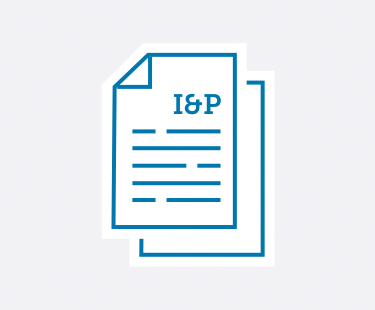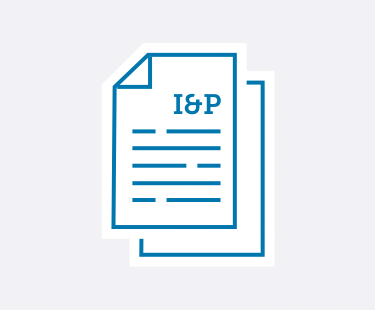

Learn practical strategies to handle emerging trends and leadership challenges in private schools.
No matter if you’re a School Head, Admission Director, Development Director, Board member, or any other private school administrator—Ideas & Perspectives®, ISM’s premier private school publication, has strategic solutions for the pervasive problems you face.
- Tuition not keeping pace with your expenses? In I&P, explore how to use strategic financial planning to create your budget and appropriately adjust your tuition.
- Enrollment dropping off? Discover how to implement the right admission and enrollment management strategies that engage your community—and fill your classrooms.
- Trouble retaining teachers? Learn how you can best support your teachers using ISM’s Comprehensive Faculty Development framework. Your faculty members will become more enthusiastic about their roles—which ultimately improves student outcomes.
- Fundraising campaigns not as successful as you’d hoped? Implement ISM’s practical advice and guidance to build a thriving annual fund, construct an effective capital campaign, and secure major donors—no matter your community size or location.
- Not sure how to provide professional development—for you and your staff? Learn ways to develop and fund a successful professional development strategy. You can improve teacher-centered satisfaction and growth, which in turn strengthens student-centered learning.
- Problematic schedule? You can master the challenges of scheduling with the help of ISM’s practical advice, based on our experience with hundreds of schools and our time-tested theories.
- And so much more.
I&P has shared targeted research, up-to-date insight, and sound theory with school leaders since 1975. More than 8,500 private school decision-makers find the answers to their schools’ administrative and governance matters in our advisory letter. We give you the strategic answers you need.
As an ISM Silver or Gold member, you not only receive issues online and in print 10 times a year, but you have access to 900+ articles in our web archive. Need help? It’s at your fingertips! Learn more and sign up for ISM's membership here.
Search
See the articles from our latest issue of Ideas & Perspectives.
Parent Relations in the Pre-enrollment Period
Volume 33 No. 5 // April 13, 2008
As the school year draws to a close and your new parents are in the process of transitioning into active members of your school community, review the effectiveness of your Parent Retention and Education Program (PREP) in the pre-enrollment period. An effective PREP moves your school beyond a conversation-by-conversation model to a strategic, systemic, and culturally savvy approach to parent relations that takes into account the psychology of "value reinforcement." A planned, structured education process strives to draw parents into a deeper and more meaningful relationship with the school.
1. Already a member? Click here to login.
2. Not a member? Click here to become a member.
3. Not sure? We'll help you figure it out.
Beyond Advanced Placement: Mission and Educational Excellence
Volume 33 No. 4 // March 28, 2008
With your unique mission as the foundation, there are educational benefits for moving beyond Advanced Placement, including: freeing up your exceptional faculty to optimize their skills and exercise appropriate educational autonomy; and creating a curriculum that fits your school’s culture, mission, history, geographic, and political modalities. A third strategic benefit is: distinguishing your school from its competitors to improve your profile (over time) from a college-counseling standpoint.
1. Already a member? Click here to login.
2. Not a member? Click here to become a member.
3. Not sure? We'll help you figure it out.
ISM's Standards for Professional Growth and Renewal
Volume 33 No. 4 // March 28, 2008
For over a decade, ISM has connected professional growth and renewal with evaluation. We are now publishing the ISM Standards for Professional Growth and Renewal, which private-independent schools can use to assess whether their investment in faculty professional development is focused clearly on students, articulated as a systems activity (or framework), contextually meaningful in building professional relationships among teachers, and a measure of the results achieved.
1. Already a member? Click here to login.
2. Not a member? Click here to become a member.
3. Not sure? We'll help you figure it out.
Predictability, Support, and Protection: Establishing a Corrective Action Policy
Volume 33 No. 3 // March 4, 2008
Deciding to dismiss a faculty or staff member is one of the most emotionally difficult decisions a School Head must make—a situation that is only exacerbated if the Head is uncertain about the potential legal ramifications of the decision (e.g., "If I decide to let this person go, will we be sued—and will we lose?") as well as the impact of the termination on the faculty culture (e.g., how many faculty members will be wondering, "How could they do this to Jim?" and "Will I be next?"). Prior to reaching that point, however, all efforts should be dedicated toward communicating performance standards and providing active support for those with performance deficiencies to help them meet and exceed these standards. Accordingly, we recommend that schools establish and publish a Corrective Action Policy to address these issues—one that is designed to support your mission, culture, and values while providing significant legal protection to the school.
1. Already a member? Click here to login.
2. Not a member? Click here to become a member.
3. Not sure? We'll help you figure it out.
Faculty Recruitment: Teacher Quality vs. Quantity
Volume 33 No. 3 // March 4, 2008
Evidence in support of an alleged teacher shortage has floated about for years. Whether such a shortage develops or not in the private-independent school world in general or in your school’s specific locale, the real question may not concern the quantity of teachers in your pool of candidates.
1. Already a member? Click here to login.
2. Not a member? Click here to become a member.
3. Not sure? We'll help you figure it out.
Your Head Support and Evaluation Committee: A Checklist
Volume 33 No. 2 // February 11, 2008
One of ISM’s longest-standing recommendations is to entrust to a Board committee the sole responsibilities of supporting and evaluating the School Head. Like all Board-level committees, the Chair and members of the Head Support and Evaluation Committee (HSEC) should be selected annually by you, the Board President, because they have the qualities necessary to excel in this governance area. Following is a checklist of the qualities you seek during your review, designed to allow you and your Committee on Trustees Chair to ensure that this crucial committee stays precisely on its proper course.
1. Already a member? Click here to login.
2. Not a member? Click here to become a member.
3. Not sure? We'll help you figure it out.
Character Education and Faculty Culture
Volume 33 No. 2 // February 11, 2008
In a previous article, ISM identified four cornerstones of character education as practiced in private-independent schools, including Purpose and Outcome Statements, advisory program/homeroom meeting, curriculum, and a strategic plan. This article, the second in a series, discusses the impact of faculty culture—the pattern of customs, ideas, and assumptions driving the faculty’s collective set of professional attitudes and behaviors—on character education.
1. Already a member? Click here to login.
2. Not a member? Click here to become a member.
3. Not sure? We'll help you figure it out.
The Admission Funnel: Interview Tactics
Volume 33 No. 1 // January 17, 2008
A critical step in the admission funnel process occurs when students are screened to ensure they are mission-appropriate. Most private-independent schools include multiple activities in the screening process—the older the student, the more screening activities are required because there is more information available. Typically, schools want to see past grades, achievement test results, and teacher recommendations, among other information. Many schools require the student to visit the campus for a partial or full day. During these visits, interviews of the student and parents are often scheduled with the Admission Director or an Admission Officer. Certainly students applying for the upper elementary grades and the middle or upper schools will be interviewed—even if those families already have children in the school.
1. Already a member? Click here to login.
2. Not a member? Click here to become a member.
3. Not sure? We'll help you figure it out.
An Annotated Teacher Contract - ISM Model
Volume 33 No. 1 // January 17, 2008
ISM recommends that private-independent schools provide one-year contracts to faculty members to: support and enhance the faculty culture by providing employment safety and security to faculty for the academic year; and maximize continuity of instruction for students by creating a mutual obligation between the school and the member, reducing the potential for disruptive mid-year faculty departures.
1. Already a member? Click here to login.
2. Not a member? Click here to become a member.
3. Not sure? We'll help you figure it out.
Building Your Faculty's Characteristics of Professional Excellence
Volume 32 No. 16 // December 27, 2007
ISM has suggested that conventional thinking about private-independent school mission statements should be revisited. School leaders, caught between the need to craft an (1) inspirational, (2) compelling, and (3) marketing-effective statement, on the one hand, and a (4) comprehensive, (5) actionable, and (6) outcome explicit statement, on the other, have too often found the result unsatisfactory. The commonly experienced result has been a 30-word mission statement that attempts all of the above, thereby appearing cluttered, confused, and sometimes (necessarily) similar to those of competing schools.
1. Already a member? Click here to login.
2. Not a member? Click here to become a member.
3. Not sure? We'll help you figure it out.


